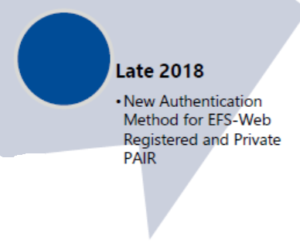I am delighted to be able to invite people to attend a pharma/biotech continuing legal education program. This remarkable program lets you hear from an important person in the biotechnology part of the European Patent Office, Dr. Klaus-Peter Döpfer, and a very experienced patent practitioner in the pharma/biotech field, Ms. Sandra Pohlman. They will talk about smart ways to draft patent applications with EPO subject matter eligibility in mind. Continue reading “Pharma/biotech European patent claiming CLE free of charge!”
PDX and DAS on Tuesday
Attend a webinar this coming Tuesday, June 19th. The subject is PDX and DAS. Or maybe you do not need to attend, because you already have mastery of PDX and DAS! Those who have mastery of PDX and DAS should have no problem passing this DAS quiz. Continue reading “PDX and DAS on Tuesday”
Not too late to sign up for the Denver PCT Seminar
There are a couple of seats left for the Denver PCT Seminar which starts tomorrow morning bright and early.
Details here.
As of right now we could even accommodate one or two walk-in registrations.
Private in-house PCT and DAS Training
In a recent blog post I listed the remarkable number of opportunities in the next few months for public PCT and DAS training programs. What readers might not know about is that in addition to the many PCT and DAS training programs that are provided to the general public, many PCT and DAS training programs take place privately at law firms and corporations, as I will describe. Continue reading “Private in-house PCT and DAS Training”
Upcoming opportunities to learn about PCT and DAS
It is remarkable how many upcoming opportunities there are to learn about the Patent Cooperation Treaty and the WIPO DAS system: Continue reading “Upcoming opportunities to learn about PCT and DAS”
PCT fun in Boston

Today and tomorrow I am having a delightful time serving on the faculty of a PCT Seminar in Boston sponsored by the PCT Learning Center.
See if you can pass a simple quiz on the DAS system
Here’s a simple quiz about the DAS system. Pass this quiz and it means you know quite a bit about DAS. Continue reading “See if you can pass a simple quiz on the DAS system”
A smart thing that USPTO customers should do now
 (Please also see a followup blog article here.)
(Please also see a followup blog article here.)
Those who make use of Private PAIR and EFS-Web are accustomed to USPTO’s very clunky way of accomplishing two-factor authentication, namely the poorly designed Entrust Java Applet (EJA). USPTO has now formally announced (see excerpt at right from a slide in a USPTO webinar yesterday) that it will replace EJA with a much more user-friendly approach. The goals of today’s blog article are:
- describe the new system, and
- explain what you can do right now to be ready for it well in advance.
Continue reading “A smart thing that USPTO customers should do now”
Netherlands joins DAS!

It is recalled that on May 5, 2018 I blogged about the imminent development of the Netherlands Patent Office joining the DAS system. Today is the day! The participation of the Netherlands Patent Office in DAS is as a depositing Office and as an accessing Office. The participation is as to patent applications and PCT applications.
This brings to 19 the number of DAS participating Offices.
Danish patent office is now an Accessing Office in DAS
![]() The list of Accessing Offices in the DAS system continues to grow. As I blogged on May 26, 2018, the Danish Patent and Trademark Office (DKPTO) had announced that it would soon become an Accessing Office in the DAS system. Today is the day! As of today, DKPTO is an Accessing Office in DAS. Continue reading “Danish patent office is now an Accessing Office in DAS”
The list of Accessing Offices in the DAS system continues to grow. As I blogged on May 26, 2018, the Danish Patent and Trademark Office (DKPTO) had announced that it would soon become an Accessing Office in the DAS system. Today is the day! As of today, DKPTO is an Accessing Office in DAS. Continue reading “Danish patent office is now an Accessing Office in DAS”
